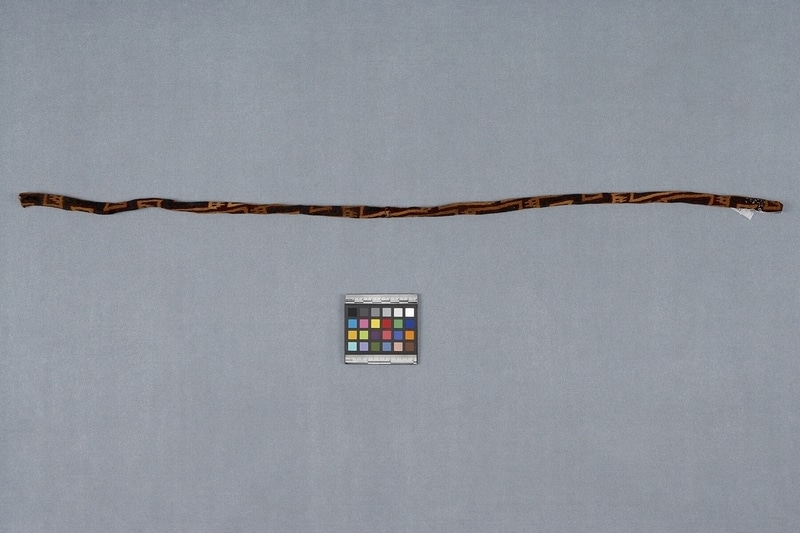Headband Item Number: Sf876 from the MOA: University of British Columbia

Description
A fragmentary tubular band with yellow meandering serpent design against a background of brown and green; looped over a core of red, white and blue threads; made up of two sections sewn together. One outside end is complete, the other is incomplete. Z-spun, 2 ply s yarns; core yarns are spun z, 2 ply s and 4 ply z. Blue yarn used in modern mend.
History Of Use
Tubular headbands like this are found at Ocucaje, Ica Valley (King). At Paracas Cavernas site, cross-knit looped turbans are found on the false heads of mummy bundles (carrion-cachot). The most outstanding associated textiles are, generally, structurally patterned open works like gauzes, and the ceramics are incised and resin painted.
Iconographic Meaning
Two meandering serpents, each with many heads. Serpents are used in all periods. In the earlier Chavinoid Style, serpents are used as metaphors for body coverings such as hair, facial wrinkles, belts, headdresses and fur and feathers on animals. In this period, serpents often repeat in regular patterns, although they may retain the metaphorical association from the earlier period. The shape of the band re-iterates the serpent iconography.
Item History
What
- Name
- Headband
- Identification Number
- Sf876
- Type of Item
- headband
- Material
- alpaca wool fibre ?
- Manufacturing Technique
- spun, cross-knit looped, dyed and plied
- Overall
- height 84.5 cm, width 1.5 cm
Where
- Holding Institution
- MOA: University of British Columbia
- Made in
- Peru
When
- Creation Date
- between 601 BCE and 501 BCE
- Collection Date
- between 1949 and 1966
- Ownership Date
- before May 4, 1981
- Acquisition Date
- on May 4, 1981
Other
- Item Classes
- textiles
- Condition
- poor
- Accession Number
- 0711/0378